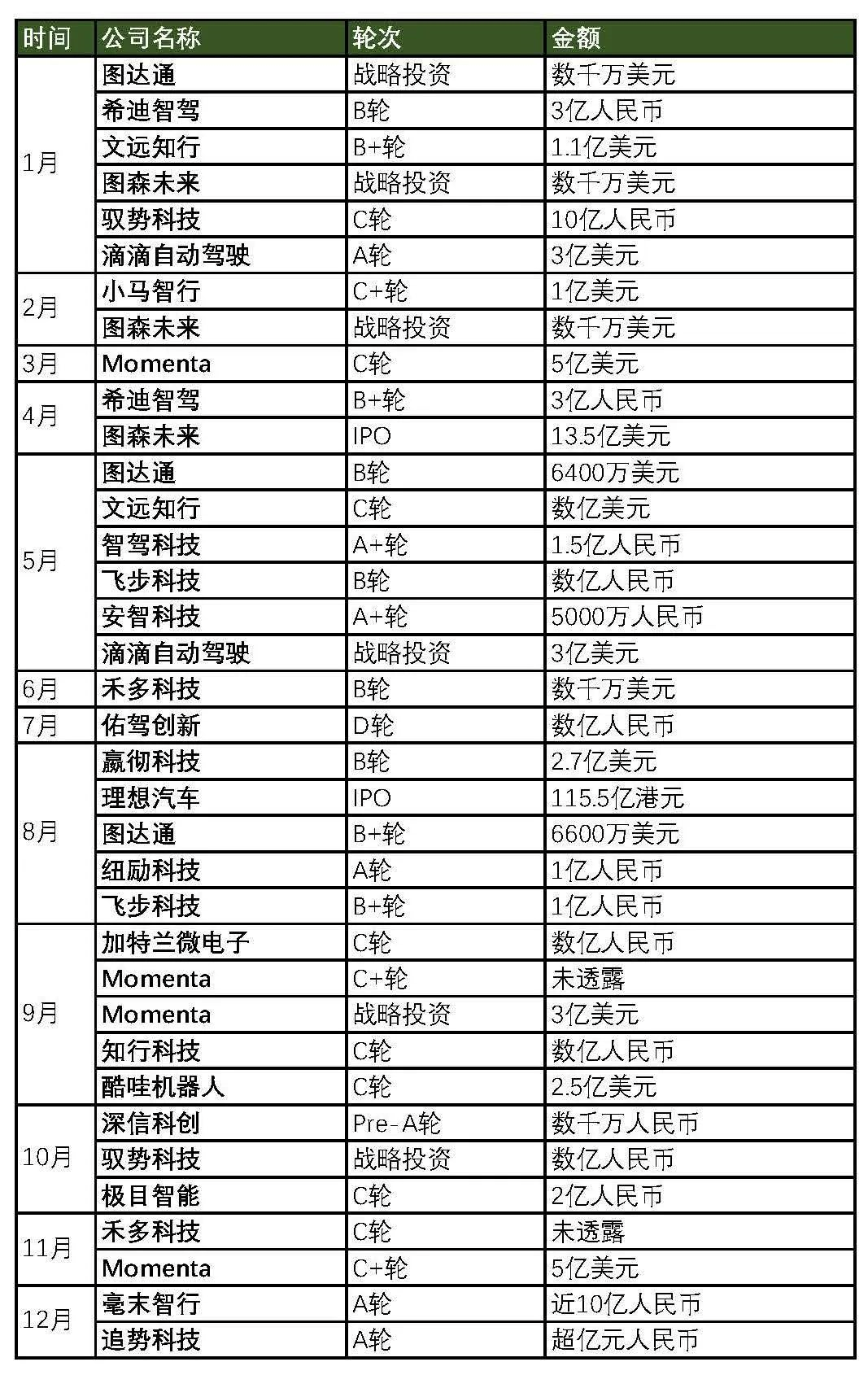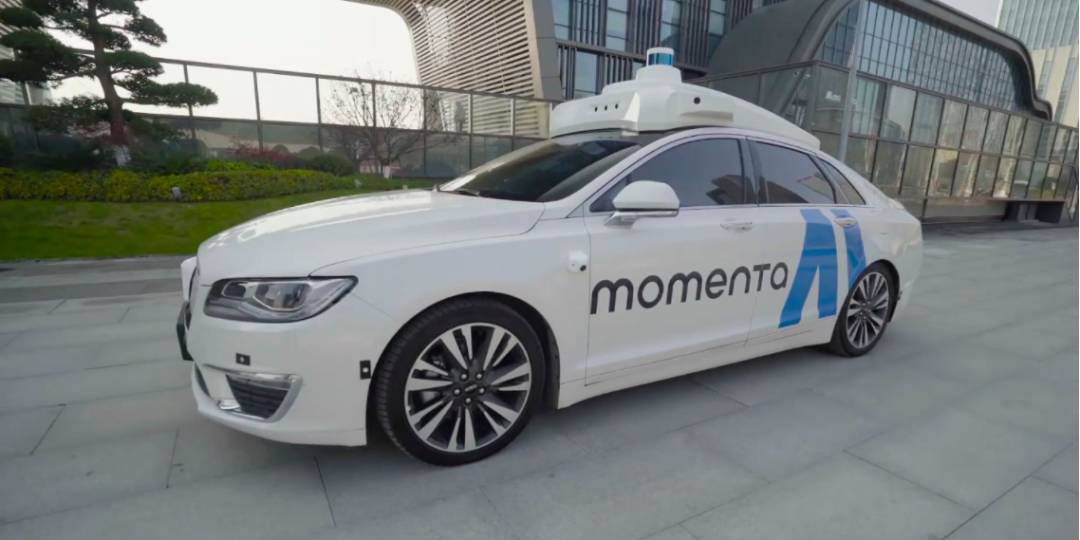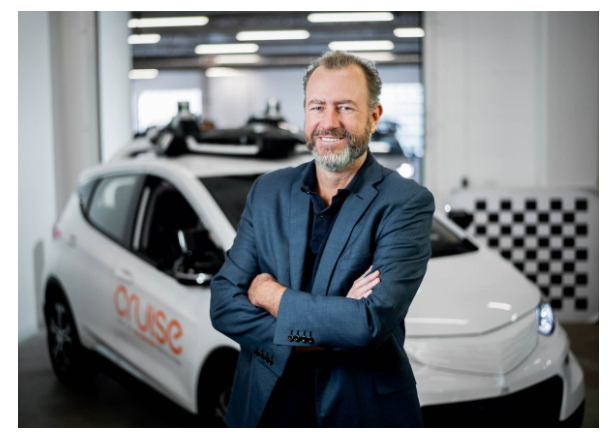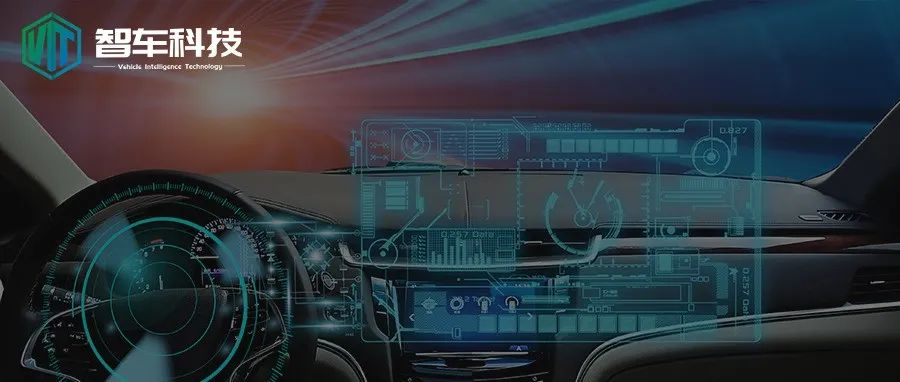Introduction
As the hottest topic in the global automotive market, whether major automakers have started to promote solid-state LiDAR as front-end configuration, or the Robotaxi gradually promoted in limited scenarios, we witnessed many moments of milestones in the field of autonomous driving in 2021. With the gradual unlocking of the limited scenario landing function of autonomous driving, capital will continue to pour into the autonomous driving market in 2022, even if we cannot see the full-scale landing of L4 level autonomous driving technology in the automotive industry in the short term. However, the influx of capital will not cause prosperity in the entire industry, and the situation of a hundred flowers blooming will gradually be replaced by the Matthew effect. Leading companies will remain strong and become an unchanging truth.

Momenta Becomes the Biggest Highlight of 2021
As we can see from the above table, Momenta is undoubtedly the biggest winner. Not only has it won the favor of many investors and capital, but also traditional automakers such as SAIC, GM, and even Toyota and Daimler have invested and joined the Momenta camp. Among the many investors of Momenta, SAIC is a relatively firm one, and its Robotaix business’s autonomous driving software platform is also provided by Momenta. From the perspective of SAIC, the biggest difference between Momenta and Huawei is that Momenta does not have the same ambition as the latter. Momenta’s positioning is only a technology company, and there is basically no plan to build its own cars in the short term. In the future, it will either act as a supplier of autonomous driving software platforms or be acquired by SAIC or other automakers, following the old path of Cruise or Argo AI. In this way, SAIC, BYD, and other companies’ vigilance towards Momenta will be significantly reduced. In the foreseeable future, autonomous driving technology companies with core technologies will still be the fat and tasty cakes on the market.

Robotaxi Becomes the Biggest Highlight
For automakers, the opening of Robotaxi operations in 2021 is undoubtedly great news. Currently, SAIC and XPeng have announced their entry into this new business sector. Compared with self-driving technology companies, automakers like XPeng and SAIC have larger advantages in terms of overall vehicle resources, as traditional self-driving technology companies often need to buy vehicles from outside and seek for automakers to open related system interfaces. Therefore, automakers have a significant advantage in their Robotaxi businesses, both from the cost perspective and from the engineering support point of view. In addition to SAIC and XPeng, more automakers will inevitably enter this market in the future. At the end of 2021, we also saw the Geely-backed Zeekr team up with Waymo to create exclusive vehicles for the mobile travel market. Although these vehicles will be first launched in the US market, who can guarantee that Zeekr, equipped with the Waymo Drive system, will not enter the Chinese market?
Moreover, both startups such as RoboTaxi and Pony.ai, as well as ride-hailing giants such as Didi Autonomous Driving and WM Motor, will actively invest in the Robotaxi business. For Robotaxi, the proportion of driver costs in the total cost is becoming higher and higher. Removing the driver completely or downgrading the driver to a safety officer can greatly improve the profitability of Robotaxi by reducing the workload of the driver. Ultimately, self-driving technology will become a core competitiveness for automakers in the era of car sharing, and these developments will stimulate capital to accelerate investment in companies with Robotaxi businesses.
Apart from Robotaxi, as can be seen from the investment chart above, Tusimple and Uisee have also received a lot of attention from investors. The day when commercial vehicles deploy L4-level autonomous driving and achieve commercial operation in trunk logistics is already at hand. The vision of domestic self-driving technology companies should not only focus on the domestic market but also expand their global footprint. Both the trunk logistics market and the last-mile delivery market are promising.
Reflections on the Cruise overhaulThe final thing worth mentioning is that in December, the current CEO of Cruise was dismissed by General Motors management. The reality behind this incident cannot be separated from the word “money.” The GM CEO integrated Cruise into its own system to maximize the rise in its automotive stock price, while the Cruise management team naturally hoped to spin off the company. After all, compared to GM’s traditional vehicle business, Cruise can offer investors a greater imagination and seek higher valuations. But ultimately, this so-called “coup” within Cruise was mercilessly suppressed. The autonomous driving business requires a large amount of investment, and it is difficult to see substantial returns in the short term. It is not easy to seek a financial balance in autonomous driving business, especially when many autonomous driving technology companies are accelerating their development through capital intervention, and the financing channels of host factory autonomous driving businesses are relatively closed. Should we insist on independent research and development, or adopt an acquisitive strategy, or pursue both paths in parallel, all require careful planning.
There is no doubt that autonomous driving is still a money-burning but promising project. However, as the saying goes, “the last mile is the hardest,” and even with mature technology solutions, pushing them into actual application requires tremendous effort. How long is this road, and when will every car consumer truly enjoy the convenience brought by high-level autonomous driving? It is still a mystery. But we believe that as long as global capital is abundant and countries do not retract liquidity from the currency market, autonomous driving will undoubtedly be a popular investment opportunity in 2022, only with a more obvious Matthew effect.

This article is a translation by ChatGPT of a Chinese report from 42HOW. If you have any questions about it, please email bd@42how.com.
